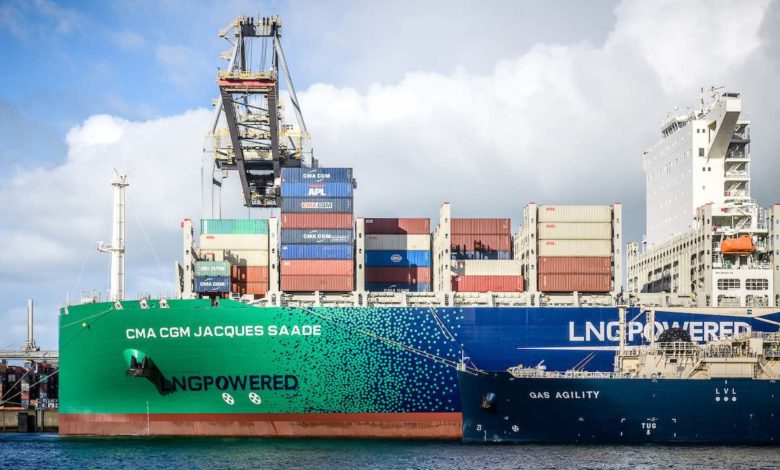LNG enters new phase

Dallas Smith, director of LNG and offshore at the Liberian Registry, writes today on the importance of rapidly scaling up LNG fuelling options at ports around the world.
There’s a ploy used in tabloid journalism about building up stars and then bashing them once they’ve made it to the big time. The same could be said in the excruciating slow development of LNG as a ship’s fuel. However, the past few days have been rather monumental in the marathon to make LNG a mainstream shipping fuel, led by the fuelling in Rotterdam of a gigantic modern marvel CMA CGM vessel (pictured) – the largest ship fuelling to date of this fuel type. It has taken a long time to get to where we are today – on the cusp of genuine change.
Prior to joining the Liberian Registry this year, I was with the United States Coast Guard for 20 years, during which time I oversaw all the LNG operations for the organisation globally including all things related to bunkering.
I’ve seen LNG as a fuel grow from bullish pronouncements in conference halls 15 years ago to now being used onboard ship; but it has been slow and still the shoreside infrastructure needs beefing up. Yet no sooner has gas taken off than its detractors have come out in force – the methane slip argument is gaining traction. Nevertheless, I still believe gas as a bridging fuel has a strong future – there is very little out there so far down the road in terms of tech and infrastructure development. It’s time is now, made all the more relevant by the decision this week at the Marine Environment Protection Committee meeting at the International Maritime Organization (IMO) to bring in emissions cutting measures across the entire global merchant fleet.
We need to accept that LNG-fuelled ships are going to be charterers’ often chosen newbuilds for this decade
At the Liberian Registry we are building a global gas team, and we’re now the fastest growing flag for gas-related ships in the world. We’re definitely seeing a huge shift with so many of our customers moving in the direction of gas, whether it is LNG, propane, ethane – as a transition fuel – hopefully for 25 years, but we don’t have a crystal ball.
Of course, LNG’s greatest problem is that it contains carbon, so it may not be around beyond 2050, but that does not mean it cannot play a crucial part on shipping’s path to zero carbon.
LNG has long been touted as a future fuel but in chicken-and-egg fashion we’ve been waiting around for so long, working out who will build the bunker facilities, the bunker vessels and the whole supply chain. It is getting there, but it is still hardly global – we need more.
Take the US west coast, for instance, that is an area in urgent need of gas fuelling infrastructure, and bear in mind this can take three to five years to install.
Port authorities need to build the infrastructure because LNG-fuelled ships are being built fast – 200 already delivered with at least another 100 on the orderbook.
Here’s an interesting stat for readers, courtesy of brokers SSY. Of the total tanker contracting – for vessels 10,000+ dwt and excluding chemical tankers – in the first 10 months of 2020, about 10% of the orders were placed for LNG dual-fuelled vessels, close to the 11% placed in 2019, and up from 2% in 2018 and about 8% in 2017.
“As confidence in LNG as a bunker fuel has grown alongside improved vessel refuelling infrastructure and accessibility, more shipowners have in the last two years committed to LNG dual-fuelled ships rather than LNG-ready vessels,” SSY noted in a report this month.
We need to accept that LNG-fuelled ships are going to be charterers’ often chosen newbuilds for this decade – and these ships will be around through to the 2040s – so now is the time to make their fuelling options far more global.
